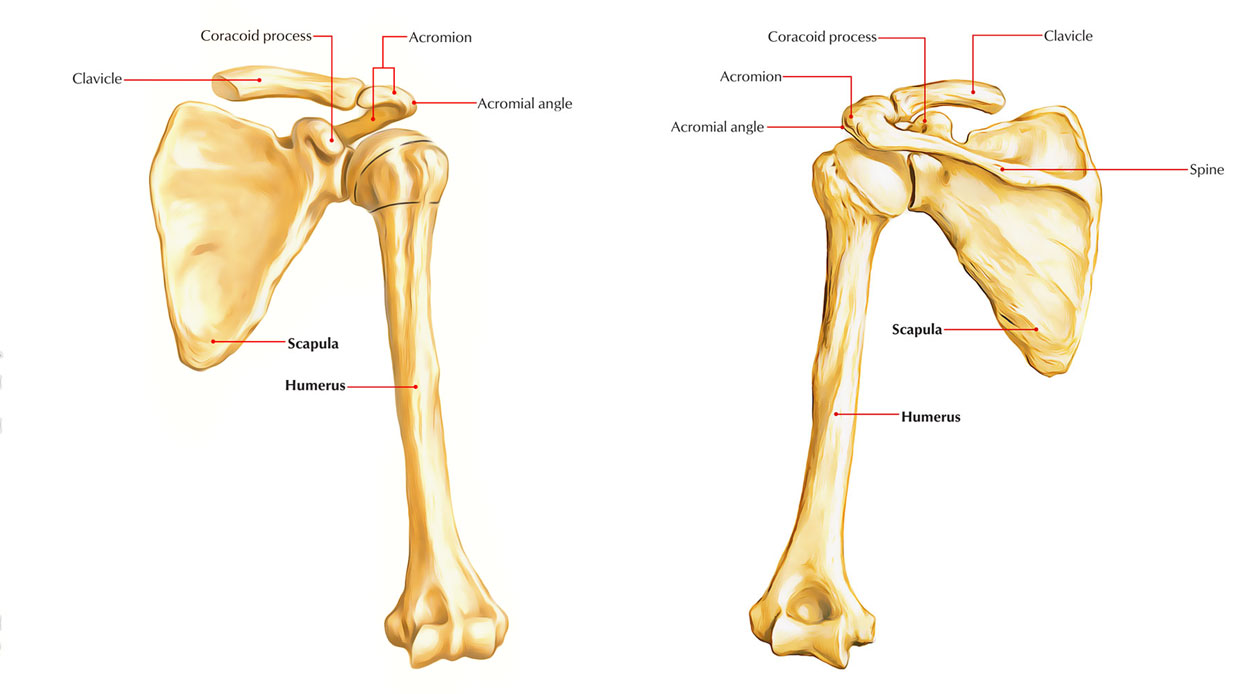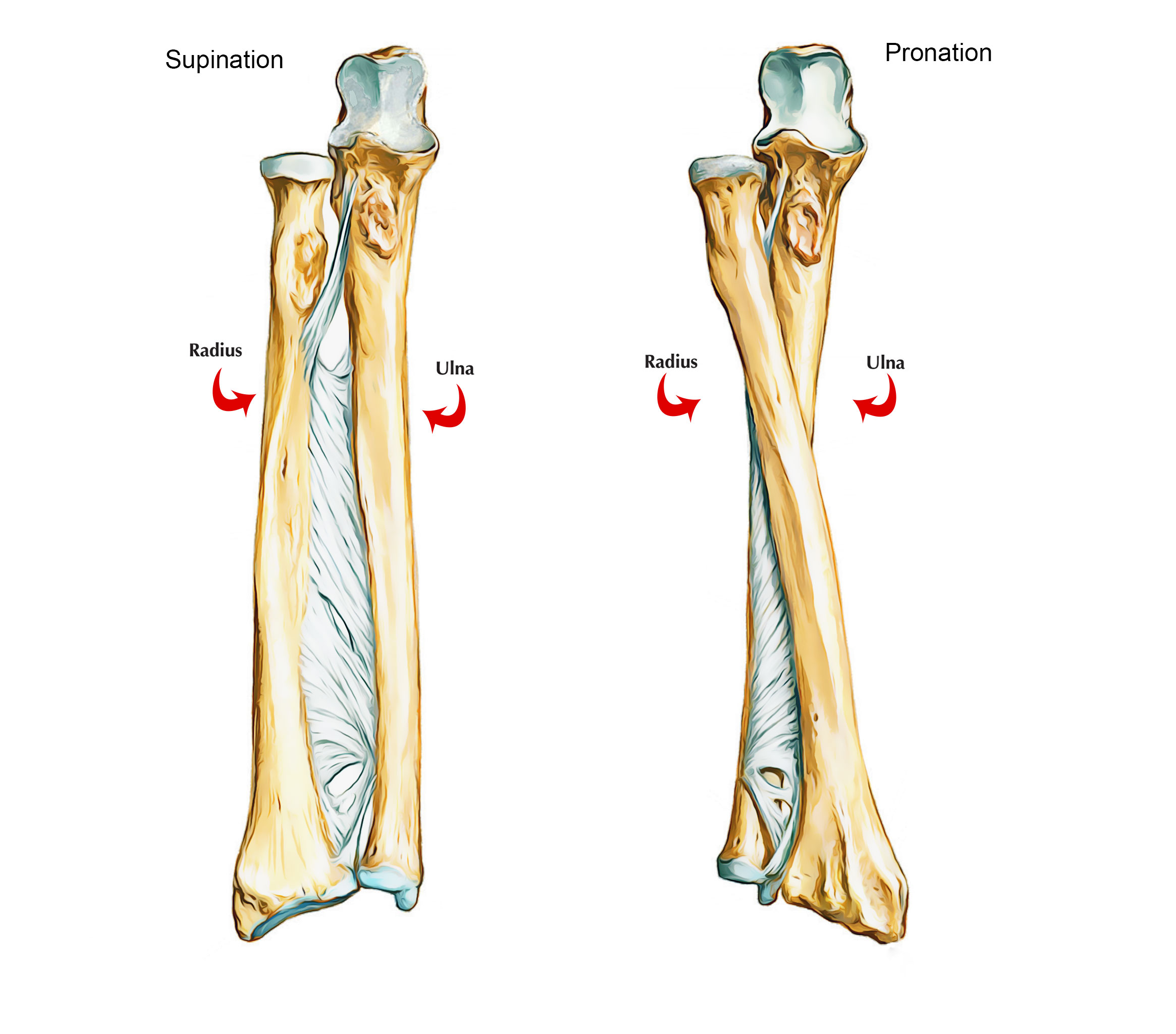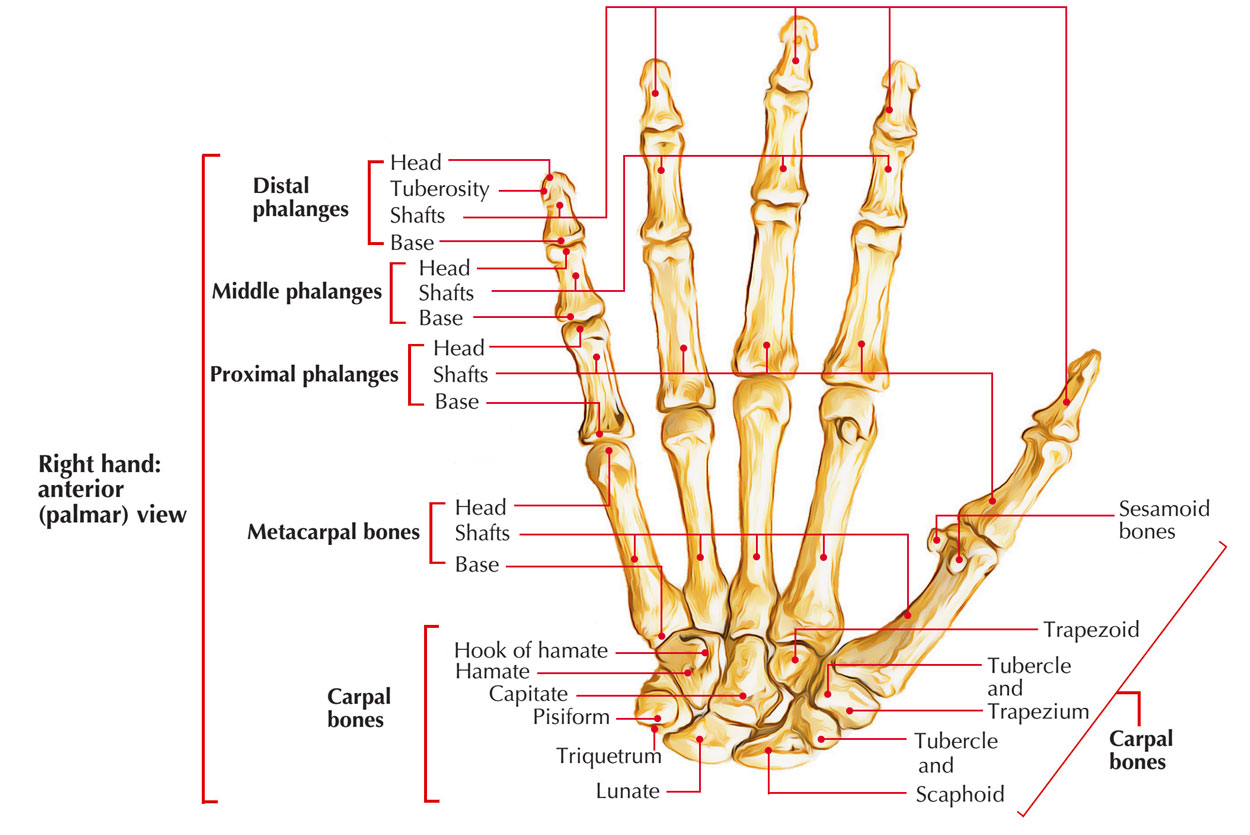The study of bones of the upper limb is important to understand the general topography of the upper limb and the attachment of various muscles and ligaments. The students must read the features and attachments of the bones before undertaking the study of the upper limb. Below mentioned is a brief context of the bones of the upper limb.
Scapula
The Scapula (or shoulder blade) is a big, flattened, and triangular bone. The scapula is located on the upper part of the posterolateral aspect of the thorax, opposing 2nd to 7th ribs. Placed on the postero-lateral aspect of the thoracic cage, scapula is a thin, flat triangular-shaped bone. A change in movement or scapular positioning might cause your shoulder, and can make it hard to move your arm when performing activities. It has 2 surfaces, 3 Boundaries, 3 Angles and 3 procedures. When a condition or an injury causes these muscles to become imbalanced or weak, it can change the position of the scapula at rest or in motion.

Bones of Upper Limb: Scapula
Clavicle
The Collar bone or Clavicle is the long bone, having a slight S-shaped curve. Horizontally collar bone lies at the junction of root of the neck and trunk on the frontal aspects of body. Collar bone articulates along with the sternum and 1st rib cartilage and also vertically with the acromion process of the scapula. It can be palpated through its entire extent as it is subcutaneous and acts the only bony attachment between the trunk and upper limb.

Bones of Upper Limb: Clavicle
Humerus
Humerus is known as the bone of the arm. It is the longest and also strongest bone of the upper limb. Many muscles which manipulate the arm at the forearm at the elbow and the shoulder are anchored to the humerus. The region articulates forming part of the shoulder joint. The humerus is the basis to which muscles insert, like the pectoralis major, the deltoid, and others.

Bones of Upper Limb: Humerus
Ulna
The Ulna is the medial bone of forearm and is homologous to the lateral bone of leg– the fibula. The ulna is attached to by muscles in the arm and forearm to perform movements of wrist, hand and the arm. The end of the ulna presents a large notch-trochlear, or the semilunar, notch – that articulates with the trochlea of the humerus (top arm bone) to form the elbow joint.

Bones of Upper Limb: Ulna
Radius
The Radius or Radial Bone is the horizontal long bone of the forearm. It is one of the two bones of the forearm, the other being the ulna. The radius is shorter than the ulna and is prism-shaped long bone. The radius is homologous to the medial bone of the leg, tibia.
Bones of Hand
There are 3 groups of bones in the hand:
1. The 8 carpal bones are the bones of the wrist:
- Scaphoid
- Lunate
- Triquetral
- Pisiform
- Trapezium
- Trapezoid
- Capitate
- Hamate
2. The 5 metacarpals (I to V) are the bones of the metacarpus.
3. The phalanges are the bones of the digits -The thumb has only 2 and The remaining digits have 3.
The large bony framework of the palm is formed by the carpal bones and metacarpals of the fingers – index, middle, ring, and little fingers (metacarpals II to V) that tends to work as a unit. On the other hand, the metacarpal of the thumb independently functions and enables the flexibility at the carpometacarpal joint in order to have an opposite supply from the thumb to the fingers.

Bones of Upper limb: Bones of Hand


 (52 votes, average: 4.55 out of 5)
(52 votes, average: 4.55 out of 5)